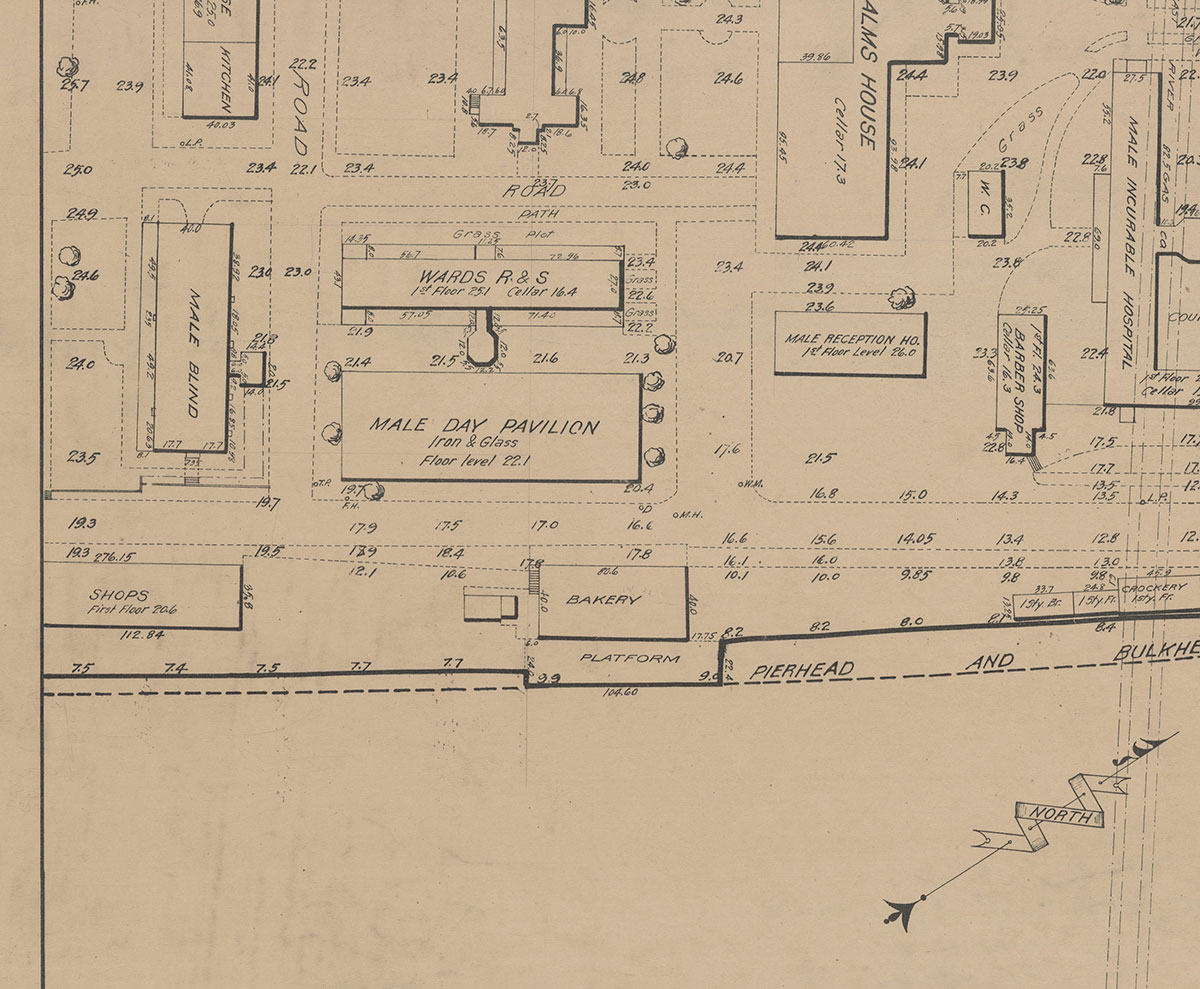You are here:
Survey of Blackwell’s Island

Date: Mar 15, 1832
Caption: Section of a diagram of institutions on Blackwell’s Island (now called Roosevelt Island) that includes a building for “Male Blind” ward, and other buildings to house poor people.

Many blind people lived in dire conditions in the city almshouse for the poor, because they were not able to support themselves and had no other place to go. After visiting the city almshouse with Samuel Akerly in 1831, John D. Russ decided to found the New York Institute for the Education of the Blind. Russ brought three blind boys from the almshouse’s ward for blind men on Blackwell’s Island (in the East River and near Randall’s Island). He took them to a widow’s home for care and education. This small class was the first known attempt to educate blind children in the United States. Several other children joined the following year, learning through experimental techniques to teach reading and writing used by other educators. After a period of instruction, the boys took a public examination to show the value and effectiveness of educating the blind, and as an appeal to philanthropists to donate money to the cause.1
At the time, braille, a tactile system for communication, was a relatively new invention, so students did not have access to many reading materials. Braille was inspired by a system developed by an army officer and improved by Louis Braille, a man who became blind at the age of 3. His system became the formal printing method for books for the blind in France, and later inspired British and American braille fonts. The sighted superintendent of the New York Institute for the Education of the Blind, William Bell Wait, developed a competing system called New York Point. Blind people and sighted educators debated for decades which of these competing systems was best in what became known as the War of the Dots.
-
“March 15, 1832, Dr. John D. Russ Becomes the First Teacher of the Blind in the United States,” accessed July 27, 2023, https://www.nyise.org/apps/news/article/686027. ↩︎
Categories: Manhattan, K-12 organizing, adult education
Tags: blindness and low-vision, institutionalization of Disabled people and people labeled disabled, communication, racist segregation, Disabled people
This item is part of "The Beginnings of Special Education" in "Seeking Equity for Disabled Students"
Item Details
Date: Mar 15, 1832
Creator: John S. Van Heorne
Source: New York City Municipal Archives
Copyright: Public domain. Courtesy of the Municipal Archives of the City of New York.
How to cite: “Survey of Blackwell’s Island,” John S. Van Heorne, in New York City Civil Rights History Project, Accessed: [Month Day, Year], https://nyccivilrightshistory.org/gallery/blackwells-island.
Questions to Consider
- Why do you think people would have created housing for only blind men?
- What kind of access to communication did blind children have at this time? What kind of access to communication did they not have?
- What other senses do blind people use to communicate?
References
How to Print this Page
- Press Ctrl + P or Cmd + P to open the print dialogue window.
- Under settings, choose "display headers and footers" if you want to print page numbers and the web address.
- Embedded PDF files will not print as part of the page. For best printing results, download the PDF and print from Adobe Reader or Preview.
